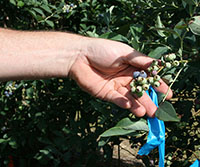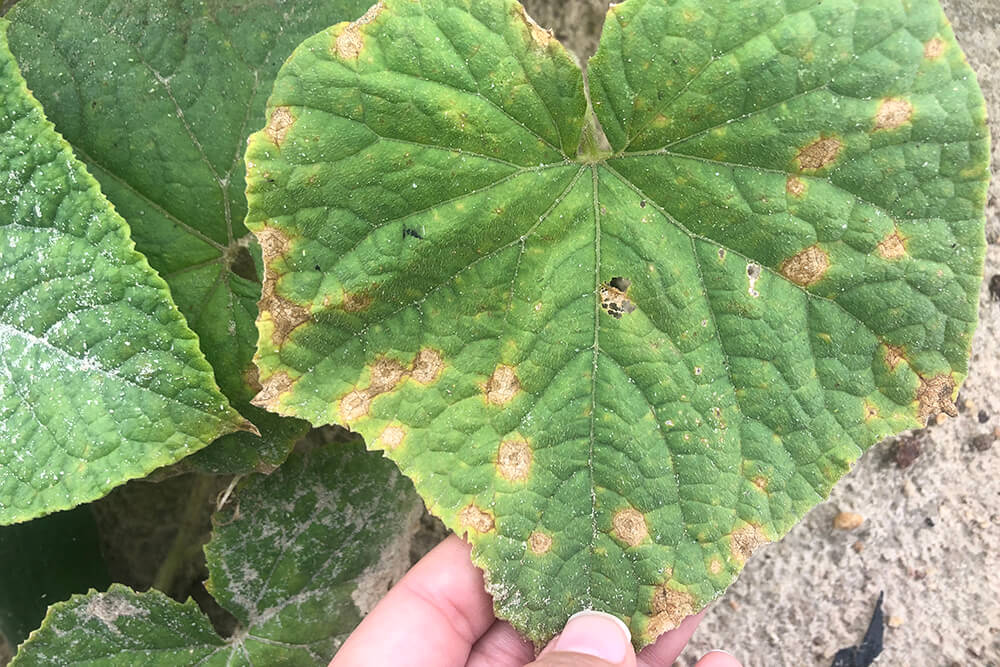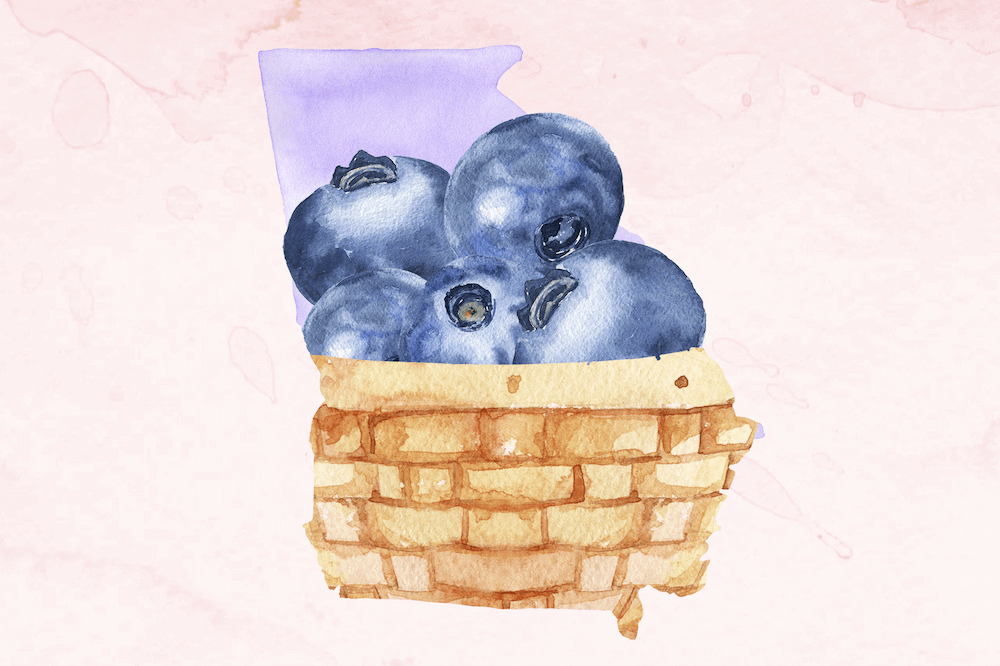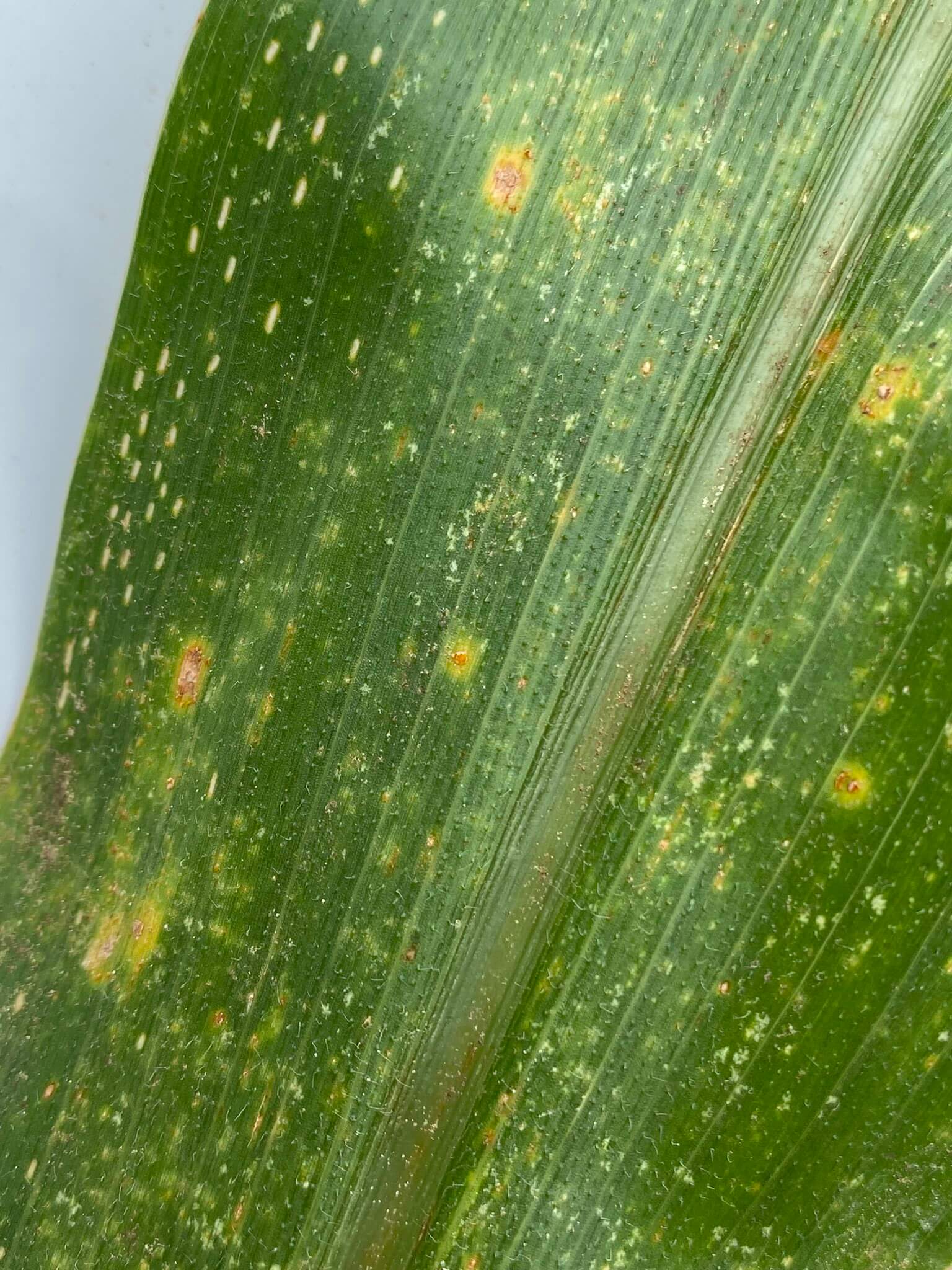Nematode control is one of the costliest hurdles to blueberry production on replanted sites. Through research trials in Appling County, Georgia, University of Georgia Cooperative Extension Agriculture and Natural Resources Agent Shane Curry found that adding pine bark mulch when replanting blueberry fields helps to combat the pests.
Growers typically replant highbush blueberries every 10 years, often around the time too many of the blueberry plants in a crop are no longer viable. When various diseases and other problems reach a certain threshold in a highbush blueberry crop, the plants must be replaced.
Nematodes are microscopic, worm-like parasites that attack the plant’s roots. If growers replant the crop in infested soil, the blueberry plants will be severely damaged over time as the nematodes feed on the young plants’ tender roots.
Damaged plants are no longer viable, which causes growers to continually replant highbush blueberries at a cost of more than $6,300 per acre.
“The nematodes build up year after year. An older plant can handle nematode damage, but a high population of nematodes is devastating to a young plant,” Curry said.
The optimal time to treat a field for nematodes with fumigants occurs during replanting, Curry said. Further, combining the soil fumigants with pine bark, and then treating the soil with that composite during replanting, greatly reduced the nematode populations and slowed the pest’s development over time, according to the research.
“The plants growing with added pine bark reacted better than with those with soil fumigants alone. Growers have been using pine bark with highbush blueberries for years, so this isn’t new. It does reiterate that we don’t need to cut corners or try to save money by leaving pine bark out,” Curry said.
To treat plants organically, Curry suggests growers employ “solarization,” the process of using a clear, plastic cover over the plants to overheat and kill the nematodes.
Solarization isn’t as effective as soil fumigants, though.
“In drier climates, like California, where they see more sun than we do, solarization would work better,” Curry said. “It’s good, but not great at treating them (the plants) because of the humidity and cloud coverage we receive.”
Growers used soil fumigants in the replanting of about 400 acres of blueberries in Appling County. Curry said this saved them almost $2.52 million.
The results of the study have been shared at county Extension meetings, and 15 local growers have visited the research site to see the benefits.
“Without research, we never would have known about or found a solution,” Curry said. “Blueberries can be infected with other diseases, but without specific research, we couldn’t have treated the problem.”
Across the state, UGA Extension agents, like Curry, conduct research in their respective counties to help local farmers.
“We’re here to find new and effective ways to help farmers and, ultimately, all the people of Georgia,” Curry said.
To read more news about Appling County’s research trials, visit blog.extension.uga.edu/applingcrop/.
(Julie Jernigan is a student intern at UGA-Tifton.)




.png)


